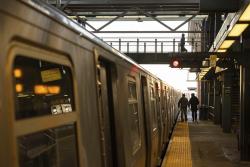The U-2 pressure suit is a self-contained life support system, providing oxygen, temperature regulation, and protection from the myriad hazards associated with high-altitude flight.
The pilots of the U-2 Dragon Lady spy plane are among the most elite in the US Air Force. A small community, carefully curated, U-2 pilots rarely receive the recognition they deserve in news coverage. They are tasked with operating in one of the most extreme environments accessible without leaving Earth’s atmosphere, flying at altitudes over 70,000 feet. At such heights, the air pressure is so low that only a few seconds of unprotected human exposure would result in unconsciousness and death. To operate in such a remote environment, U-2 pilots are outfitted with a specialized full-pressure suit, commonly referred to as a “space suit,” that closely resembles those worn by astronauts.
Officially designated as the S1034 pressure suit, the U-2 space suit is a David Clark Company product that has evolved over decades of service to meet the strenuous needs of high-altitude reconnaissance missions.
The U-2 pressure suit is a self-contained life support system, providing oxygen, temperature regulation, and protection from the myriad hazards associated with high-altitude flight. When a U-2 pilot wears the suit, his or her internal pressure is stabilized, which prevents their bodily fluids from boiling on account of the low ambient pressure encountered at 70,000-plus cruising altitudes. The suit’s outer shell consists of fire-resistant Nomex and other materials incorporated to provide durability, insulation, and flexibility.
Beneath the suit, the pilot wears a moisture-wicking undergarment and a cooling garment that is lined with tubes, through which chilled water circulates to prevent the pilot from overheating. To allow for relative freedom of movement, the torso and limbs of the suit are articulated.
A critical component of the suit is the pilot’s helmet. Sealed to the suit, the helmet features a gold-coated visor to protect the pilot from ultraviolet radiation and intense sunlight encountered at high altitudes. The helmet also houses the pilot’s communication system and is connected to the oxygen supply on board the aircraft.
U-2 missions can last for upwards of 12 hours, during which pilots are unable to leave their seats. Therefore, the pilot’s suit is outfitted with waste management systems for both urination and defecation. For urination, the pilot uses a “piddle pack,” a small, flexible, absorbent bag that collects urine through a funnel or condom-style interface for male pilots, and a specialized Advanced Mission Extender Device (AMXDmax) for female pilots. Defecation, although strongly discouraged, is accounted for with absorbent containment bags lined with gelling agents and odor control materials.
The U-2 space suit is a marvel of aerospace engineering that has permitted multiple generations of American aviators to survive on the edge of space.
About the Author: Harrison Kass
Harrison Kass is a Senior Defense and National Security Writer at The National Interest. Kass is an attorney and former political candidate who joined the US Air Force as a pilot trainee before being medically discharged. He focuses on military strategy, aerospace, and global security affairs. He holds a JD from the University of Oregon and a master’s in Global Journalism and International Relations from NYU.
Image: Shutterstock / viper-zero.

















